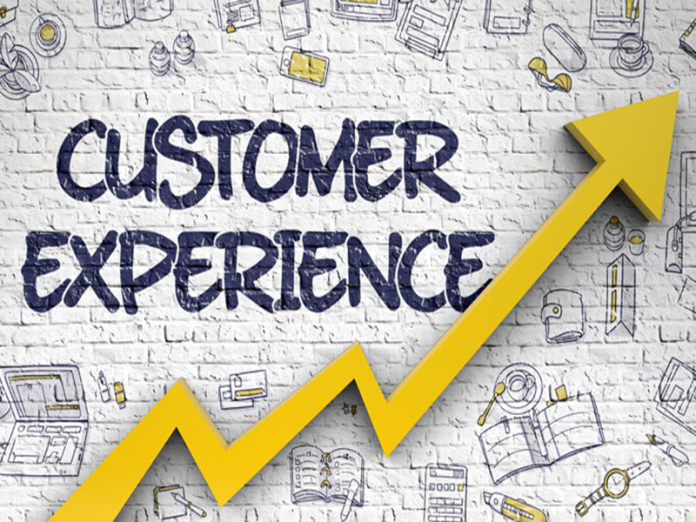Does Matthias Siems ask? Who wouldn’t like to grow their business? A set of activities that aims to increase sales, acquire new customers and reach new prospects is called growth marketing. Many growth marketers focus on strategies and tools that help customers get through the doors and onto their websites.
However, only a few realize that sustainable growth requires avoiding the churning of customers. Matthias Siems says that many companies understand the importance of customer experience (CX). It is essential for brand loyalty and retention. Despite ample evidence, many businesses don’t see the long-term return on investment that CX strategy and technology can provide.
Increasing customer retention rates by 5% can increase profits anywhere between 25% and 95%
86% of consumers are willing to spend more for a better customer service experience
To attract a new client costs six times as much as to keep an existing one.
68% of customers have stopped shopping with a brand due to an attitude of indifference toward the customer
Customer experience is an important component of growth hacking. It can make the difference between under performing and increasing profits year-over-year.
This blog will explore how referral marketing seamlessly integrates with customer experience efforts to drive growth. We also discuss why managing customer feedback and taking action is easier.
What Is Referral Marketing?
Pre-internet customer recommendations were written testimonials that could be used in advertisements, newspaper reviews, or, most importantly, word of mouth. The technology improved, and customers could share their feedback with others.
Customer referrals can now be made in many ways, including via online forums, product websites, and reviews on marketplaces. The number of tools to capture testimonials from customers has increased. Referrals and testimonials are an important component of building brand equity. They correlate well with high CSAT scores and PPS scores.
According to Matthias Siems, customers with a positive brand experience are 77% less likely to refer your business to a friend.
Because of its high ROI, referral marketing is often considered a strategic component of growth hacking. Organizing customers organically is free, but investing in a reward for referral strategy can be more cost-effective than other marketing strategies.
Referral marketing also has the added benefit of allowing your company to capture referrals using tools and applications quickly.
For growth marketers who want to convert happy customers into brand advocates, Friendbuy is an example of a customer referral platform. Friendbuy integrates easily with CX tools such as Delighted to help businesses make brand advocates and referral marketers.
Customer referrals have a low cost-per-acquisition (CPA) and a high lifetime worth (LTV), making them a reliable channel for growth hacking, increasing revenues, and improving customer experience.
Customer Experience And Referrals Can Fuel Growth Hacking — But There’s A Catch, Says Matthias Siems.
Although customer referrals may seem too good to be true, there’s one thing you need to keep in mind:
Referring to customers will only be beneficial to your company if your services and customer experiences are satisfactory. Your customers might become dissatisfied with your products or customer service and may refer others to your company.
Matthias Siems says that the only way you can tell if your brand’s health is good enough to invest in a referral program is to monitor and manage your customers’ experiences. It may seem daunting, but there are quick ways to monitor your brand’s perception with growth.
4 Ways To Manage Customer Experience With A Growth Marketing Mindset By Matthias Siems
Mark Lancaster from SDL says business leaders need to ask themselves if they are properly set up to manage customer service. The truth is that businesses often maintain an outdated organizational structure.
A growth mindset for customer experience is about listening to customers and ensuring that you consider their feedback when making business decisions. There are many aspects to customer experience. However, these four things can help you get started with customer-focused growth.
1. Customer sentiment can be measured: Happy customers are a sign of growth
Before making major business decisions or purchasing customer referral tools, it is important to assess your customer base. You can measure the sentiment of your customers throughout their entire customer lifecycle using surveys. It is the best way to gauge how they feel about your business.
The customer sentiment data can help your team identify areas that work well and need improvement. It can also be used with a variety of survey methods.
These are some of the most popular ones your team can use today with Delighted.
Net Promoter Score (NPS: An established customer experience survey methodology that can tell you which customers are supporters, neutral, or detractors of your brand using Delighted’s NPS software.
Customer Satisfaction surveys (CSAT) – These surveys aim to get deeper insights from customers. These surveys measure customer satisfaction with a product, service, or business.
Customer Efficiency Score Surveys: These surveys measure your team’s effectiveness and efficiency.
Customer Ratings: A quick and simple way to determine how customers rate your customer service. Usually, it’s a scale of 1-5.
Customer Experience: A simple and easily understood survey that measures customer satisfaction with your product or service. Smiley faces are a good way to show your happiness.
Customer Opinion: A binary way to ask customers whether a product/service is good/bad (thumbs up or thumbs down). Combined, this feedback can give you a clear and comprehensive picture of your customer’s perceptions.
These methods are available as pre-built survey templates. They can be sent via email poll or link (QR codes too). You can customize each survey to reflect your brand’s look. Follow-up questions can also help you narrow down the most important information.
2. Listen to your customers and grow
A constant dialogue with your customers is the only way to get to the bottom of their thoughts. This dialog can be organic, such as through social media and support call interactions. The latter can impact revenue growth.
Your brand can also initiate these conversations. The survey methods mentioned earlier are still applicable. Each is meant to collect your customers’ opinions, both qualitatively and quantitatively. Surveys are conversations. Listening to your customers can guide you in many business and revenue-related decisions.
3. Customer retention can be improved by using CX feedback
It is growth marketing 101, in our opinion. Collect feedback from customers at each touchpoint to keep them coming back. Each interaction point collects the data necessary to address negative feedback.
When collected properly, customer feedback is an objective look at your company’s strengths and areas for improvement.
Your team must survey customers on an ongoing basis. However, their feedback must be acknowledged and used to inform most of your business decisions. Your customers will remember your brand and refer others to you if they are allowed to offer their feedback on marketing, sales, and support.
Publicly communicating with your customers about positive changes can increase brand loyalty and help your team understand the voice of your customers (VoC).
You can also make product improvements based on the feedback you receive. It will help you differentiate your products and services from your competitors. These changes can help stimulate growth by being the first to market.
4. Customer empowerment can help you grow your brand
Customers want fast answers and want to know the truth. Self-service support creates easily accessible marketing, sales, and product materials that answer customers’ most pressing questions. These materials are useful for several reasons.
These materials improve customer experience by empowering customers to find solutions on their own quickly. It may sound counterintuitive, but many customers will first try to resolve a problem or address concerns themselves, regardless of whether the business assisted. Having materials available for customers directly impacts customer retention and enhances customer-first perception.
Second, self-service support environments allow more resources to be allocated to complex and urgent issues. Support reps will be able to spend more time providing personalized attention to customers and less time answering questions that self-service collateral can address. It all contributes to your repeat business.
Less guessing. More growth.
A customer experience program will ensure that your customers’ needs largely drive your marketing efforts for growth. It can help you to plan your business strategy and make it easier to decide where to invest your resources.
Are you ready to grow? You must find a customer experience program that works for you and your customers.
Get a free trial of our experience management software and make growth marketing decisions based on customer feedback.



















